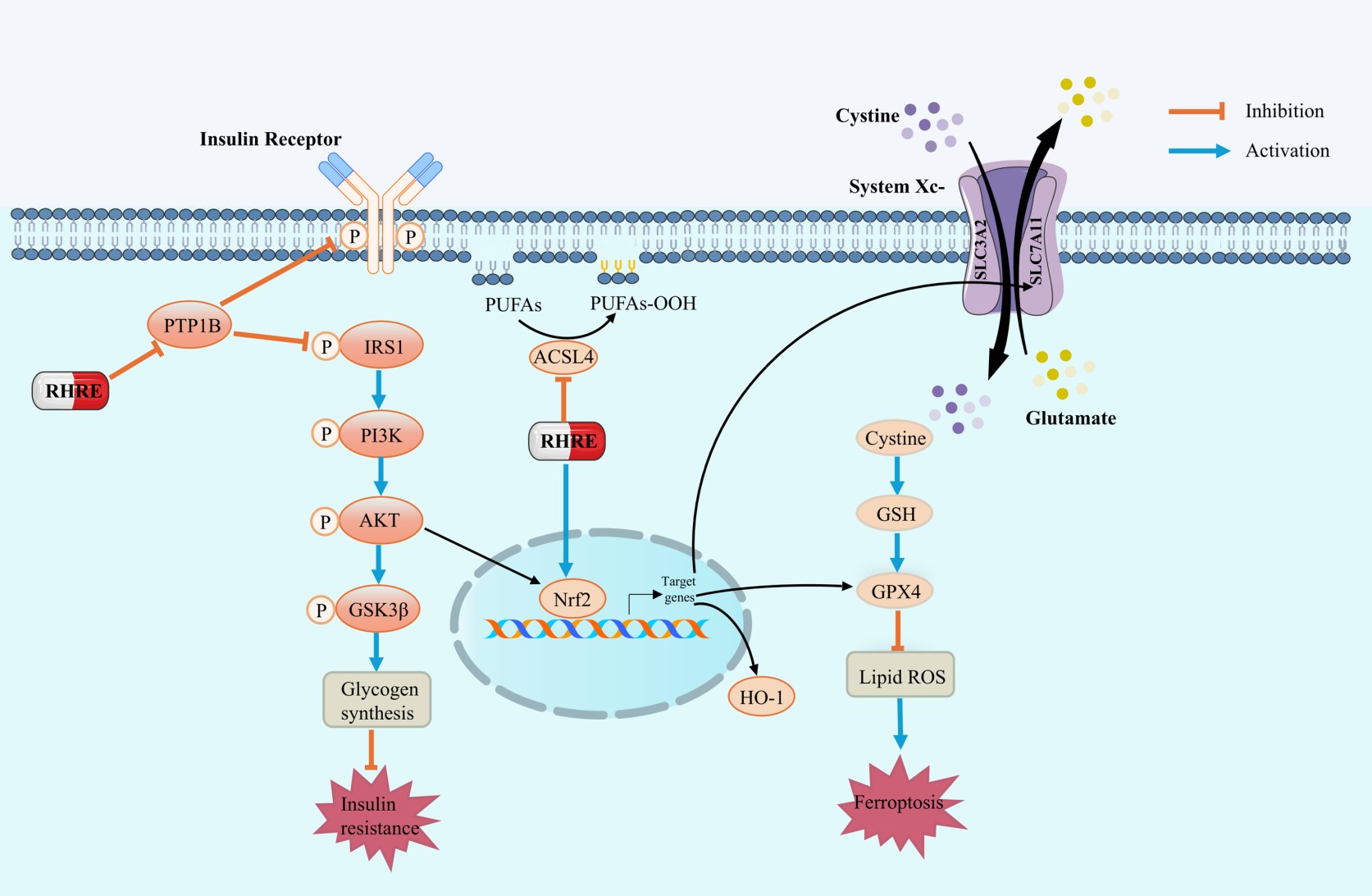Progress in hypoglycemic activity investigation of Rhodiola heterodonta by the Xinjiang Technical Institute of Physics and Chemistry
Editor: | Oct 22,2024
Diabetes has emerged as a major challenge in worldwide public health. In recent years, medicinal plants have attracted considerable interest in the pharmaceutical field owing to their low toxicity and multi-target therapeutic properties. The roots of Rhodiola heterodonta have been traditionally used as an antidiabetic herbal tea in Tajikistan. However, its hypoglycemic effect has not been extensively studied , and relevant scientific study is scarce.
Recently, the research team led by researcher Haji Akber Aisa from the Ethnic Medicine Innovation Team of the Xinjiang Technical Institute of Physics and Chemistry, Chinese Academy of Sciences, found that Rhodiola heterodonta root extract (RHRE) exhibited significant inhibitory effects on key enzymes involved in diabetes progression, namely α-glucosidase and protein tyrosine phosphatase 1B. Furthermore, RHRE demonstrated a robust capacity to scavenge ABTS and DPPH free radicals.
To elucidate the pharmacological basis and underlying mechanisms, the team first identified flavonoids and phenolic acids as the major components of RHRE using LC-MS/MS analysis, identifying 26 key compounds. Network pharmacology predictions indicated that the PI3K/AKT signaling pathway is crucial for RHRE's hypoglycemic effect. This prediction was subsequently validated by molecular docking and in vitro experiments. The core compounds of RHRE showed strong binding affinities to PTP1B in molecular docking studies. In vitro investigations revealed that RHRE markedly enhanced glucose utilization and glycogen synthesis in insulin-resistant L6 and L02 cells via modulating the PTP1B/PI3K/AKT/GSK3β pathway. Moreover, RHRE alleviated oxidative stress and suppressed ferroptosis in insulin-resistant L6 and L02 cells by activating the Nrf2/HO-1/SLC7A11/GPX4 pathway, thereby exerting antioxidant and hypoglycemic effects.
These findings provide a scientific foundation for the development and application of RHRE-related medicines, functional foods, and nutritional products in the prevention and treatment of diabetes and oxidative stress. The pertinent study, titled "Exploring the active components and potential mechanisms of Rhodiola heterodonta for alleviating T2DM based on network pharmacology" has been published in the Top journal of the Chinese Academy of Sciences, Food Bioscience. Professor Haji Akber Aisa and Prof. Xuelei Xin are the corresponding authors, and Ph.D. student Miao Hu is the first author of the article. This research was supported by the National Key Research and Development Program of China.
Article link: https://doi.org/10.1016/j.fbio.2024.105257

Figure 1. The anti-diabetic mechanism of RHRE
附件下载:
 (86) 991-3838931
(86) 991-3838931 lhskj@ms.xjb.ac.cn
lhskj@ms.xjb.ac.cn (86)991-3838957
(86)991-3838957 40-1 Beijing Road
Urumqi, XinjiangChina
40-1 Beijing Road
Urumqi, XinjiangChina